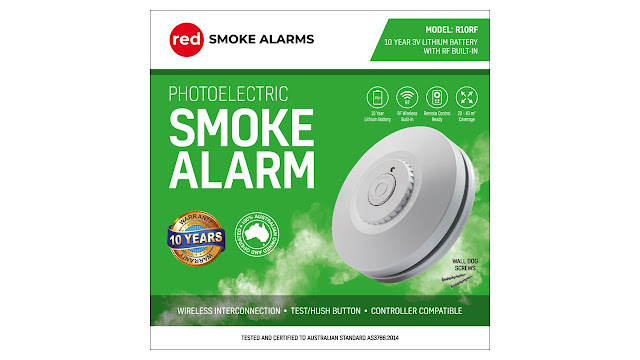Why does my smoke alarm go off even when there is no smoke?
Nothing is more annoying or stress inducing than when a smoke alarm goes off unexpectedly. But why does this happen when there is no smoke? There could be several reasons. The good news is that you don’t have to go on living this way. Wireless interconnected photoelectric smoke alarms will provide reliable protection for you and your family when installed correctly.
Photoelectric smoke alarms are activated when the light beam
inside the smoke alarm is disrupted by particles entering the smoke alarm
chamber. These foreign particles may come from sources other than real smoke.
High humidity
High humidity may occur naturally as the air carries dense
moisture particles that your smoke alarm confuses for smoke particles. Although
brands differ, smoke alarms are generally designed to work up to 95% relative
humidity – anything over this range and the air could become dense enough to
scatter the light beam of a photelectric sensor. Tropical weather conditions in
far north Queensland can sometimes produce such high humidity.
The same principal applies to steam. If your smoke alarm is
positioned outside a bathroom entrance, consider moving it to a different spot
so that shower steam doesn’t trigger nuisance alarms.
Insects
Section 4.17 of Australian Standard 3786:2014 requires that
all smoke alarms have protection against foreign bodies so that a sphere of
diameter larger than 1.3mm cannot pass into the sensor chamber – this
protection usually comes in the form of an internal mesh screen. Despite this requirement
it is still possible that tiny insects (smaller than 1.3mm) could enter the
smoke alarm and by doing so interfere with the photoelectric sensor. One tip to
reduce this likelihood is to spray the ceiling around your smoke alarm with bug
spray (being sure not to allow the bug spray itself to enter the alarm).
Dust
A build-up of dust may also affect your smoke alarm if the
dust particles enter the internal chamber and interfere with the photoelectric
light beam. That is why we recommend cleaning your smoke alarms regularly by
gently vacuuming around it with the soft brush attachment from your vacuum
cleaner. Cleaning your smoke alarm this way may remove any cobwebs which could also
prevent pests from entering the alarm.
Cooking!
It doesn’t matter what brand of smoke alarm you have, if you
install it too close to the kitchen stovetop or oven it will activate when
smoke particles are emitted from food cooking. Be sure to use the oven exhaust
when cooking to draw smoky air particles away from the vicinity of your smoke alarm
or consider repositioning the alarm further away from the cooking appliance.



Comments
Post a Comment